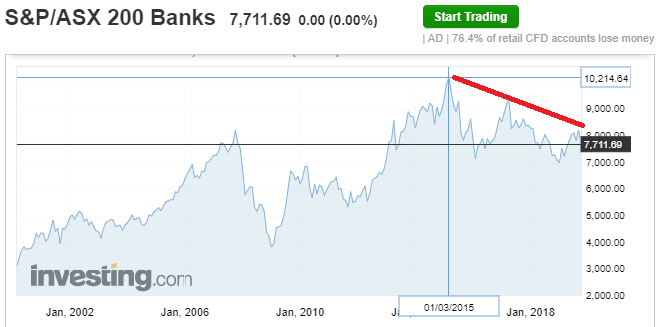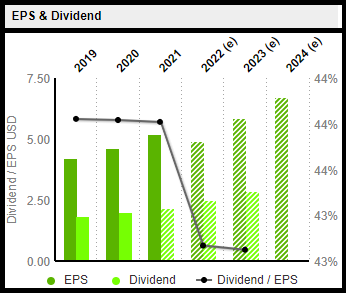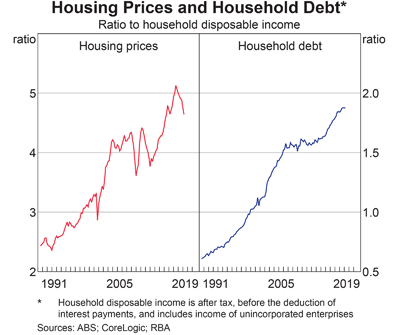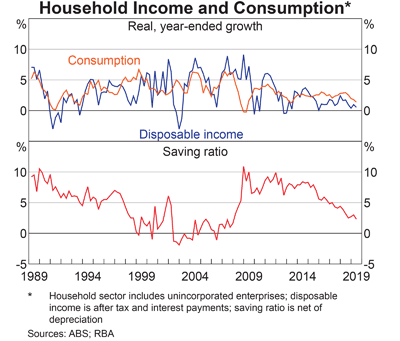Slack Investor remains IN for Australian index shares, the US Index S&P 500 and the FTSE 100. The Slack Investor followed overseas markets had rises all round this month. The ASX200 (+2.7%), a recovering FTSE100 (+1.4%), and a booming S&P500 (+3.1%).
The Federal Reserve bank of Cleveland have the probability of a US recession within the next year at 29.1%. This has been steadily reducing since a peak at 41% three months ago. The current value exceeds the Slack Investor threshold of 20% and my monthly stop losses for Index funds are “switched ON”
All Index pages and charts have been updated to reflect the monthly changes – (ASX Index, UK Index, US Index).
Mayfair Platinum – “Investing has changed” – No it hasn’t!
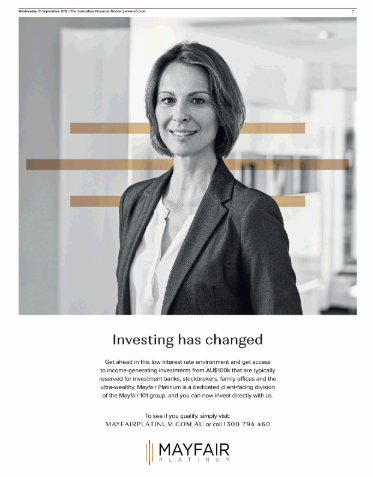
There has been a barrage of advertisements in the press. Mayfair 101 says “We’ve been listening closely to investors who are frustrated by the sustained fall in interest rates. ” Their M+ Fixed Income product offers a juicy 5.45% for a 12-month term. Slack Investor is worried that this grand media campaign may fool some investors into thinking this vehicle is just as safe as bank deposits.
” M Core Fixed Income is a secured, asset-backed investment product that provides the benefit of the Group’s extensive diversification strategy coupled with our Australian real estate portfolio including our recent strategic investment in Mission Beach and Dunk Island. “
Mayfair 101 Managing Director James Mawhinney, commenting on one of their products – from the Mayfair Platinum site.
Hang on Mr Mahwinney … did you say “secured” … you definitely didn’t say safe! By a quick comparison of their products, it seems that you don’t even get security with a paltry $100K invest – you need $250K to get the “secured asset backing” of their M Core product.

Mayfair 101 has been aiming a recent massive ad blitz to cashed up investors who are frustrated with the low returns offered by bank term deposits. They have been very successful since they set up in 2017, rapidly growing their fund to $100m in April 2019 and aiming for $250m. Mayfair advertising is littered with lines like “Tired of term deposit rates?”, “A popular cash and term deposit alternative…”, “Do you qualify?” – this campaign has plenty of fizz.
Slack Investor knows a bit about North Queensland, and the beautiful Mission Beach and Dunk Island area. There have been a number of tourist booms in the past, but each time they have been defeated by either a tropical cyclone, distance to international airport, rising interest rates, or a domestic tourism downturn. Tourism investments are definitely risky!
As well as cyclone ravaged Dunk Island, the parent company Mayfair 101 has investments in technology and cryptocurrency companies, and according to the Guardian, another abandoned island, in Venice – an area suffering from heavy flooding this month.
“In the modern age of investing, we are mindful that profit-generation is no longer the sole benchmark for a company’s success”
James Mawhinney Mayfair 101, from The Guardian
Sorry Mr Mawhinney , I’m not sure where you live, but in the Slack Investor world, profit generation is definitely the most important benchmark! At best, the Mayfair products seem speculative investments that carry a good deal of risk – a long way from the safety of the government guarantee for bank term deposits (up to $250K).
One of the few advantages of getting older is that you get to see the cyclic nature of investment. A good reminder of 35 years of investor busts can be found in the Chanticleer Reviews. Mayfair … You’re “investor-facing division” is not getting any of Slack Investor’s money. Despite the slick presentations and corporate glitz – this, as my mother used to say, “has got a real smell about it! “
I cannot give financial advice, but Slack Investor would not invest in Mayfair Platinum, and, if I had invested, I would take out my money as soon as I could (while the Mayfair distribution and withdrawal record is still intact). I would try other types of investment such as higher yield industrial shares or industrial/office REIT’s if I wanted higher returns than bank deposits. These latter vehicles also have risk attached …. but, I’ll wager, much less risk than tourist property speculation, tech companies, and cryptocurrency plays.
It may take some years, but this Mayfair 101 thing … it’s not going to end well for the punters!



